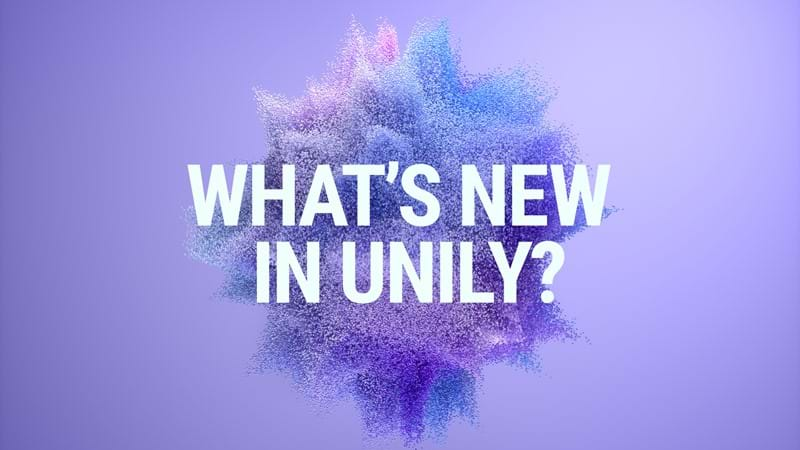7 important questions to ask when designing your extranet
Rather than existing in a vacuum, the vast majority of successful modern enterprises rely on a network of informed and capable partners to excel and innovate. Thus, a comprehensive digital experience must expand beyond the office in order to facilitate collaboration with external stakeholders and strengthen relationships. In this blog, we pinpoint the most important considerations to review when designing an extranet in order to create the best possible experience for everyone involved.

What is an extranet?
Before laying the groundwork for a new component of your digital workplace, it’s important to understand what an extranet is and how it differs from an internal communications platform. In short, an extranet is an extension of an intranet. It is a private network that is separate from the intranet, but the major differentiating factor is that an extranet is available to selected users outside of an organization, whereas intranets cater to team members within an enterprise. Extranets take the concept of intranets to another level by enabling customers, vendors or partners to access components of an organization’s digital workplace. Just as intranets pave the way for collaboration between team members, extranets loop in third parties to drastically reduce silos, drive efficiency, and facilitate resource sharing seamlessly.
Learn more about enterprise extranets.

What to consider when implementing an extranet
Much like introducing a new intranet software, designing an extranet that successfully engages third parties requires care and consideration. Internal stakeholders need to be able to answer the following questions in order to ensure that their organization’s extranet will maximize connectivity and pave the way for future collaborations:
#1. What are the goals of the extranet?
A digital solution should never be one-size-fits-all and extranets are no exception. Organizations can utilize external digital workplaces to fulfill a variety of different goals and objectives. For example, e-commerce platforms may launch an extranet to efficiently manage logistics and streamline communications between suppliers, distributors, couriers and consumers. In contrast, architecture organizations may take more of a project-focused approach by using an extranet to share updates between architects, engineers and contractors. Brainstorm specific goals and project components that will benefit from the introduction of a modern extranet.
#2. Who is this extranet designed to serve?
Extranets can be the core from which third party relationships flourish, so stakeholders need to carefully consider the unique users who will be utilizing this platform and tailor their digital experience accordingly. An extranet designed to provide real-time tracking data for customers might look very different from a platform dedicated to task management between multiple collaborators. When designing an extranet, visualize the types of users who will access the platform and the specific features and capabilities that will be most valuable in order to meet their goals and expectations.
#3. What kinds of collaborations and partnerships are most important to your enterprise?
Collaborations between enterprises and third parties can take a variety of different forms and modalities. One of the primary purposes of an extranet is to streamline partnerships between various organizations, so it’s important to conceptualize what these relationships look like within your organization. Features such as live data updates, searchable document libraries and private social channels may be more or less valuable to your organization, depending on the nature of the partnerships your enterprise engages in.
#4. How should user experience for your extranet differ from an intranet?
Creating a platform tailored to the needs and expectations of a user is integral to the success of any digital experience. Some organizations may opt for an extranet with many of the same features as their intranet, including social collaboration through reactions and @mentions and integrations with other tools such as Salesforce or HubSpot. Conversely, other enterprises may decide to forgo these features and utilize the platform solely for data tracking or logistics management. Contrasting the features your intranet users need with those of third parties can help stakeholders establish a clear vision for the type of user experience their extranet needs to provide.
#5. What kinds of safety and confidentiality measures should be prioritized?
Another powerful functionality of an extranet is the ability to control what information third parties can access. External user invites enable workers to collaborate with clients, partners and suppliers by sharing sites and content directly. Invites, permissions and access can be easily managed by stakeholders in order to protect sensitive information and restrict third-party views when needed. Depending on the nature of your enterprise’s collaborations, different security and confidentiality measures can be taken to facilitate knowledge sharing without leaking any restricted information.
#6. How can stakeholders optimize the extranet adoption process?
Much like introducing a new intranet, the most successful extranet adoptions help guide the user through every step of the onboarding process. Announcements should be sent out in advance to introduce third parties to the new extranet and glimpse the features and functionalities of the digital workplace. An internal employee or team should be appointed to serve as a point of contact once the extranet has launched. Provide third parties with easy to access resources, such as a centrally located FAQ page or a bundle of explanatory articles. To pave the way for future developments while maximizing engagement, consider adding a user experience form or survey, which can help stakeholders deliver the best digital experience possible.
#7. What types of innovations will help take my extranet to the next level?
In years past, organizations looking to collaborate with third parties relied almost exclusively on Sharepoint as the foundation for their extranet. While Sharepoint provided a solution for bringing external parties up to speed, user experience was far from a priority. In contrast, modern extranets can be tailored specifically to the collaborators that matter most to your enterprise. Companies can drive engagement and third-party user satisfaction through specialized capabilities such as social networking features that encourage cross-organization connectivity, user segmentation for targeted experiences and external invites that enable employees to collaborate safely and securely with outside users.
Are you ready to boost collaboration with third-party partners?
A modern extranet can be a valuable asset to your digital workplace by empowering knowledge sharing with external users, driving productivity and establishing clear communications pathways. If you are interested in incorporating an extranet into your enterprise’s digital toolbox, learn more or get a free consultation today!
Get started. Get your free demo.
Reinvent your intranet for the employee experience era.













